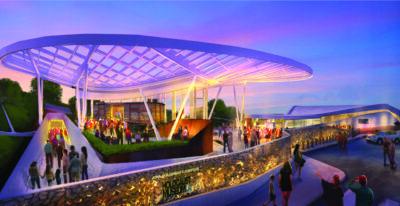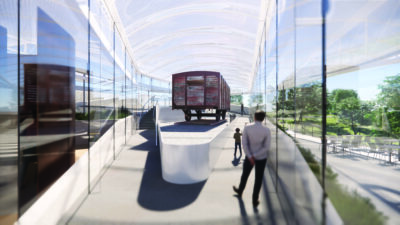Plans are underway to expand campus at Holocaust Museum
Little did a small group of Holocaust survivors who met in the 1960s at an English-as-a-second-language class know that their efforts would lead to a major museum in the heart of the city.
The group, who met at Hollywood High, each had an item from the war — a Star of David on a shirt, a photograph or a document. Their wish t

RENDERING of the proposed Jona Goldrich Campus at the Holocaust Museum LA.
o find a permanent home to display the items and also to educate the public to never forget led to the Holocaust Museum LA (earlier called the Los Angeles Museum of the Holocaust).
It was the first survivor-founded — and is now the oldest — Holocaust museum in the United States.
“It’s a great story,” said Holocaust Museum LA CEO Beth Kean.
“They wanted to create a safe space. They wanted to remember family members they lost… They were pioneers.” Their efforts began decades before other museums would follow.
The museum is commemorating its 60th anniversary with expansion plans for its facility within Pan Pacific Park, which opened in October 2010.
The new Jona Goldrich Campus, designed by award-winning architect Hagy Belz-berg, who designed the current museum, will almost double the existing site from 28,000 square feet to 50,000 square feet. Additionally, it will double the pre-COVID 60,000 annual visitor capacity.
While much of the existing museum is partially underground with a sloping roof to blend into the park, the new adjacent site will be 100 percent above ground with high ceilings and natural light.
The expansion also will present an authentic railroad boxcar that had transported Jews, and others, to death camps. It came from near the Majdanek concentration camp in Poland.

BOX CAR from the Nazi era will be housed in the new pavilion on the roof of the existing museum building.
Adds Kean, “The Holocaust is not just a Jewish story. It’s a human story, and that’s why we have to learn the lessons of what happened, so something like that doesn’t happen again.”
The story of the Holocaust is more important than ever, she adds. “Division in the country is increasing the demand for Holocaust education and for more robust programming starting in kindergarten.” Now, children as young as the fourth grade visit the museum.
Another compelling reason to expand is that visitors to the museum have increased by 400 percent since 2010.
Before the pandemic, the museum turned away school and tour groups because of lack of space.
“It was heartbreaking,” said Kean.
The expansion will allow the museum to increase visitor capacity to 500,000 by 2030, including 150,000 students.
The additional space also allows for more cutting-edge technology to preserve Holocaust survivor testimonies.
This is especially relevant as the museum enters a “post-survivor world,” when most of those who lived through the Holocaust will be gone.
The new pavilion’s theater, dedicated to serve the USC Shoah Foundation’s “Dimensions in Testimony” exhibit, will allow visitors to have a virtual conversation with a Holocaust survivor using a holographic capture and voice recognition software.
Outdoor spaces, for reflection and contemplation and designed by Studio-MLA, will be enclosed with transparent fences to give views of the park.
The new campus will also have a 2,500-square-foot gallery and a 200-seat theater for survivor talks, film screenings, concerts, conferences and public programs.
To date, the campaign has raised $22 million of its $45 million goal. The money raised includes $8.5 million from the State of California, which will provide greater space for classrooms, exhibits and public programs.
The museum aims to break ground on the “Building Truth” expansion project in April 2022 and to be open by spring 2024.
“People see we’re a huge asset to the park. Families can picnic in the park and then walk in the museum … It will be more visible,” said Kean of the expansion.
Because those early founders insisted no one should be turned away from learning about the Holocaust from lack of money, admission is always free to California residents.
Parking will be at The Grove with a discounted rate with museum admission.
For more information, visit hmla.org.
Category: Real Estate
